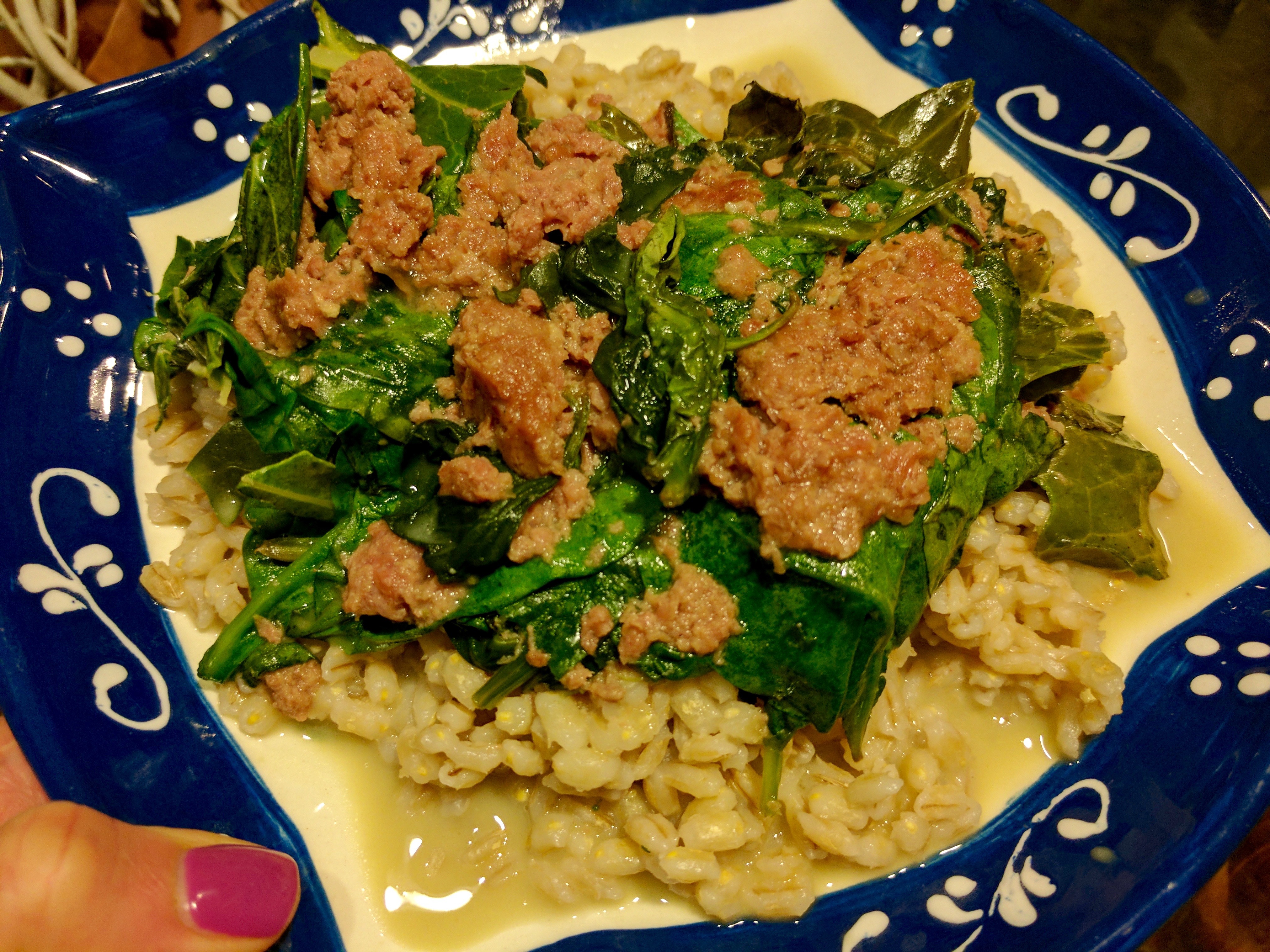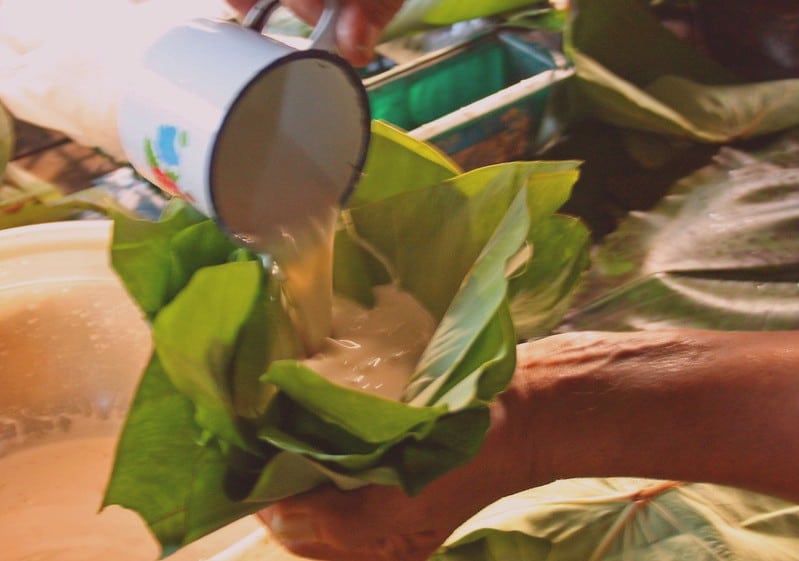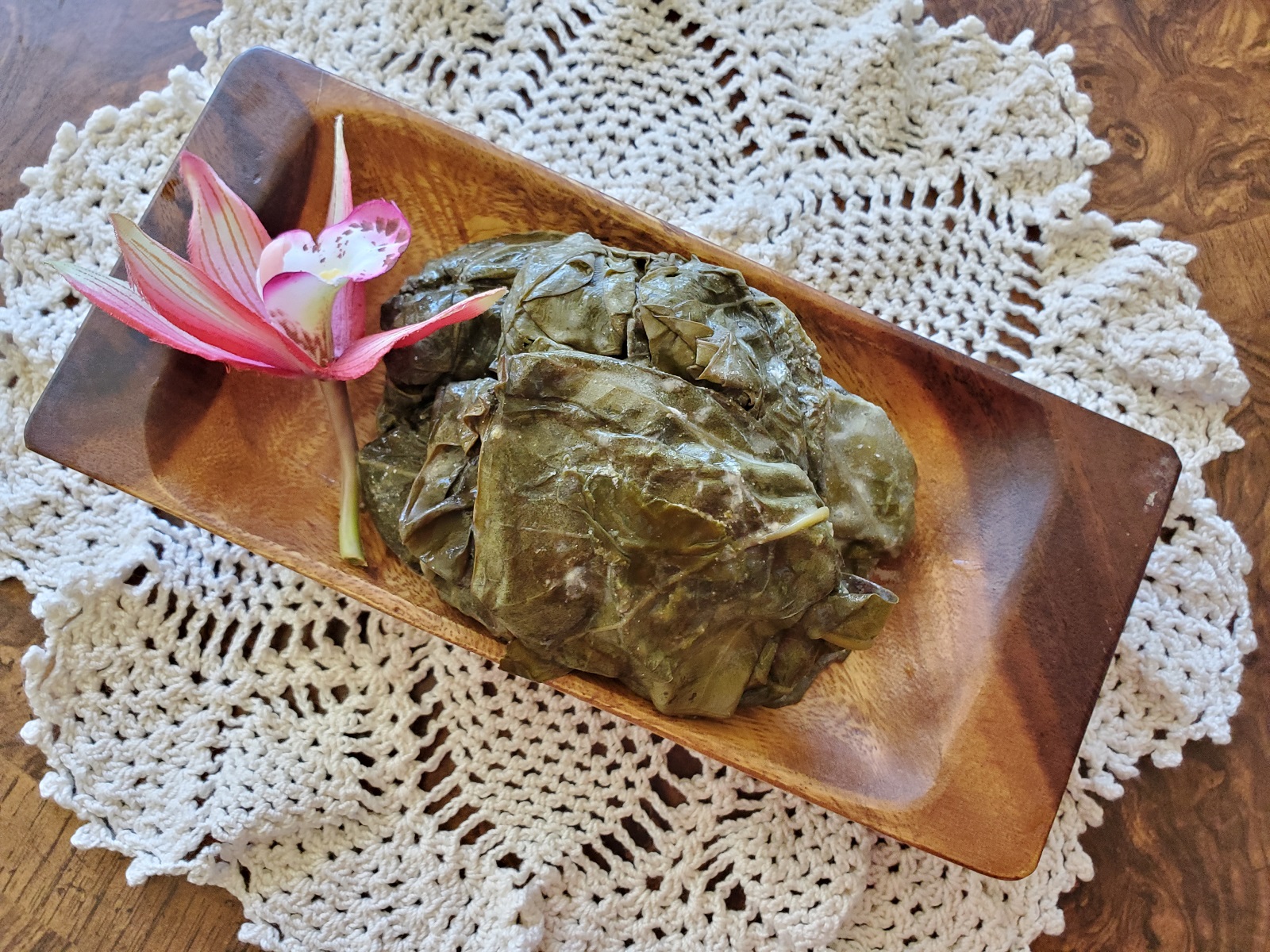Palusami
laulau, lau lau, lū, rukau
Lūʻau, Luʻau, Laulau, Lū, Rourou, Rukau, Fāfā, Hāhā, and Palusami are all related dishes found throughout Polynesia based on the use of taro leaves as a primary ingredient. While taro generally is known as a root vegetable for its starchy corms, the leaves are consumed as well. The base recipe is vegetarian. Most often, coconut milk was added, and later meat or seafood. The texture of the dish range from a thick soup to a dense cake. Taro is one of the most ancient, cultivated crops. Believed to be native to India and Southeast Asia, taro were carried into the Pacific Islands by Austronesian peoples from around 1300 BC, where they became a staple crop of Polynesians. Although associated as root vegetable, all parts of the taro was utilized. In addition, they brought along with them pigs, chickens, and Polynesian dogs for protein. When the Western navigators arrived, they introduced foods like onions, tomatoes, corned meats and various spices. Colonialism brought with them something that would change Polynesian diets—canned goods, including the highly prized corned beef. Natural disasters brought in food aid from New Zealand, Australia, and the US, then world wars in the mid-20th century, foreign foods became a bigger part of daily diets while retaining ancestral foods like taro and coconuts.
Source: Wikipedia
Recipes


:max_bytes(150000):strip_icc()/2607423-samoan-palusami-Vanessa-Colon-4x3-1-9d2e820105c948459148f6126d4c3c5d.jpg)


